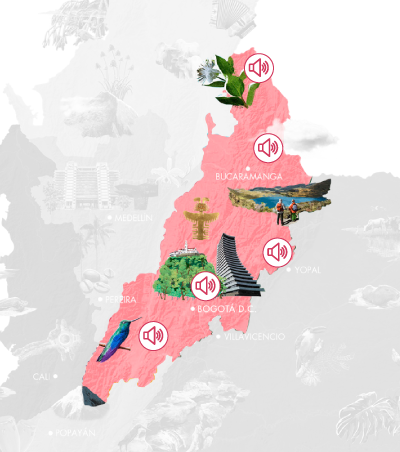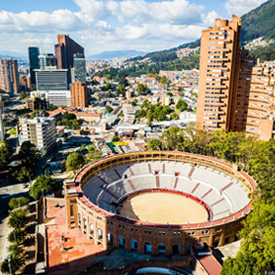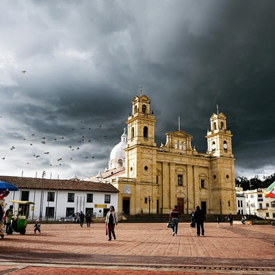Cundinamarca, a sanctuary of moors and waterways
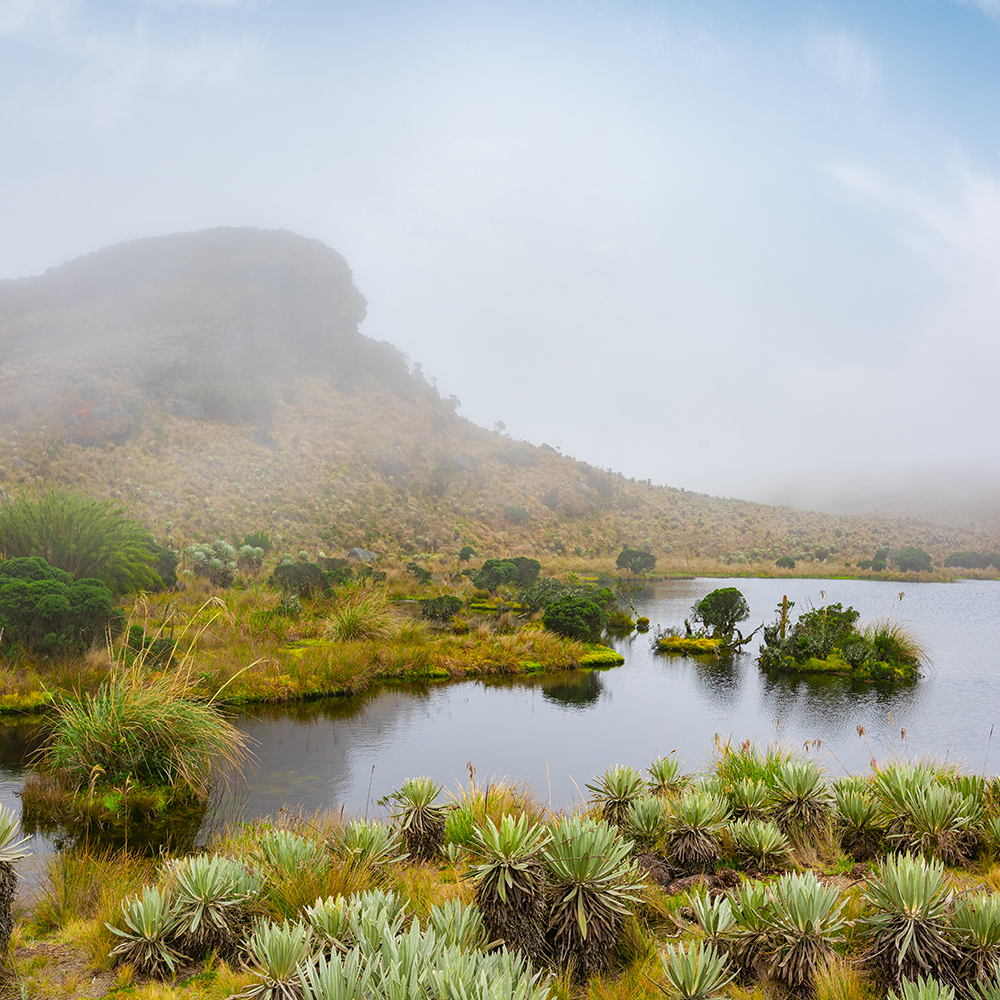
Photo caption: Landscape of the Sumapaz páramo in the department of Cundinamarca, Colombia.
Credit: Javier Crespo // Shutterstock.com
Thanks to its multiple moors, Cundinamarca is a water factory. Its landscapes full of lagoons, rivers and waterfalls are home to a great diversity of flora and fauna, and scene of legends and ancestral stories that speak of the value of water resources. In this department, life and culture develop around water, which makes it an ideal destination for those looking for ecological, adventure and outdoor activities.
Located in the Eastern Andes, Cundinamarca is a department with an invaluable water wealth. Its landscapes feature multitude of waterfalls, lakes, lagoons, rivers, wetlands and reservoirs, making most of the experiences related to this resource; thus, its protection and care is a priority among its inhabitants.
Water factory
Cundinamarca is home to multiple moors. The Páramo of Sumapaz, considered one of the largest in the world, is one of the most important water factories in the region, as well as one of the main water sources in the country.
The department also has several reservoirs where water is used for the generation of electricity that supplies much of the country and where visitors can enjoy unique landscapes to contemplate the flora and fauna of the Andean forest and experience endless activities. In the Neusa Reservoir Park, located in the municipalities of Cogua and Tausa, you can go hiking, camping and sport fishing.
Other scenarios that attract visitors are the Chicaque Natural Park, Los Trapiches Ecopark and La Chorrera, where experiences range from the practice of extreme sports such as zip lining, rafting and hiking, to ecological walks to appreciate the wealth of natural splendor here.
Featured: Download the magazine about the department of Cundinamarca to learn more about destinations where water is the protagonist.
Indigenous Heritage
Cundinamarca has a rich historical legacy inherited from the Muisca culture, from which come legends such as El Dorado, which reveal the sacred value of the lagoons for being considered the home of the gods, or the importance of emeralds whose intense color was a symbol of water, fertility and the force of life.
Part of the tourist attractions of the region have to do with this indigenouslegacy, such as the Laguna de Guatavita or the Salto de Tequendama. Currently, tourism companies work to keep the cultural heritage of the department alive, through activities that recreate and make known to visitors the life of the Muisca Indians and their influence to this day.
Cundinamarca invites you to listen to the legends, names and important places for the Muisca Indians, recognizing their arrival, as well as to travel the ancestral roads while contemplating their natural wealth with respect, tranquility and silence.
Highlight: Near Bogotá is the Chingaza National Park, which stands out for its landscapes full of frailejones and where the lagoons of Siecha and Chingaza are located, ancient indigenous sanctuaries that were the scenes of pilgrimages and ceremonies.
A unique Cathedral in the world
The Salt Cathedral of Zipaquirá is a tourist site that stands out for its infrastructure and its architectural beauty. This monument, considered Historical and Cultural Heritage of the Nation, invites visitors to be surprised by the collection of religious sculptures of marble and salt, and its three main sections: the Way of the Cross, the dome and the naves of the cathedral.
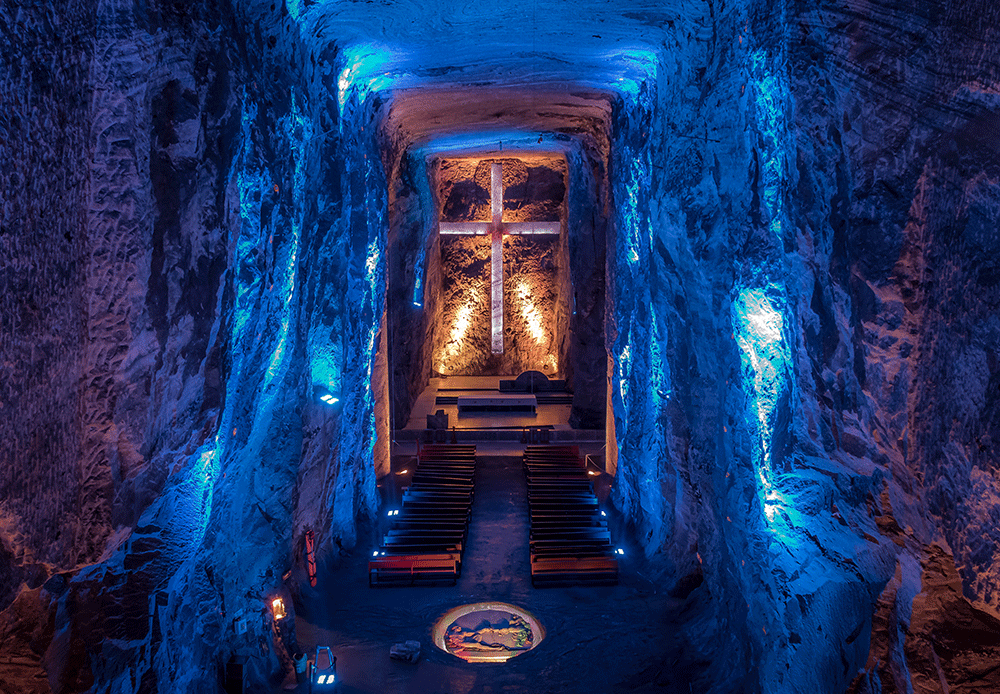
Photo caption: The Salt Cathedral is located in the municipality of Zipaquirá and is located 180 meters underground.
The Salt Cathedral is part of a thematic complex called Parque de la Sal, where the ancestral relationship of the department with salt, mining and religiosity is narrated and commemorated, through attractions such as the Museum of La Salmuera, The reservoir, the Saline Dome, the mine and the square. This place has generated great interest among national and foreign tourists who are fond of geology, history and religious tourism.
Surroundings of Bogotá
In the neighborhoods with rural areas of Bogotá is the other side of the capital of thecountry, where it is possible to disconnect from the hectic life of the city to get closer to nature through activities such as hiking and fishing. In Ciudad Bolívar and Usme you can visit attractions such as the La Regadera Reservoir, the Los Soches Agropark and the Peasant Route of Ciudad Bolívar.
Agrotourism has also become an opportunity for visitors to learn about the traditions and work of peasant families. They are the heirs of the legacy of care and respect for natural resources that the Muiscas promulgated and that they keep alive every day in their way of working the land and producing food, free of chemicals and from artisanal processes.
Highlight: The Ruta de la Panela is an experience where tourists can learn about the process of artisanal elaboration of this characteristic food of the department.
The traditional gastronomic offer includes dishes such as fritanga, chicha, ajiaco, panela, peasant picket and amasijos. However, it is also possible to find more commercial proposals and great national and international recognition such as the Andrés Carne de Res restaurant.
Photo caption: Andrés Carne de Res is one of the most popular restaurants and tourist destinations in the country. It is located in the municipality of Chía, on the outskirts of Bogotá.



